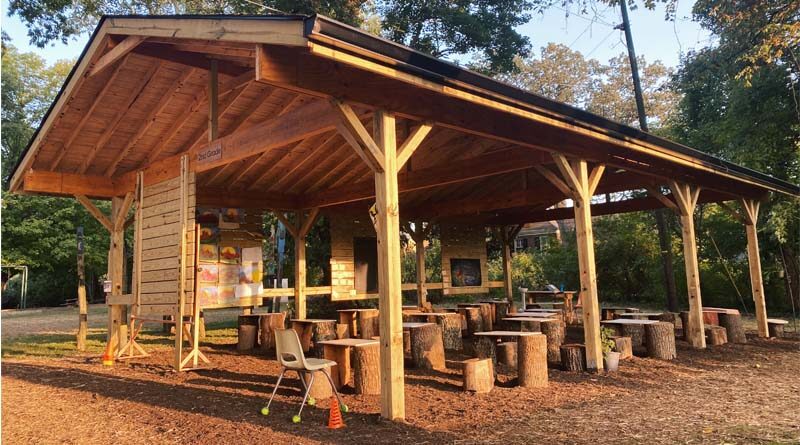Using a Pandemic as Motivation to Revitalize Education
By Jared Bradley
COVID-19 has affected educational systems worldwide, leading to near-total closures of K-12 schools as well as universities and colleges. These school shutdowns, which were mandated by the government to help lower the spread of the coronavirus, heavily interrupted and comprised students’ learning and interaction with peers.
While infection rates continue to fluctuate, U.S. educational facilities have been challenged with reopening safely amid the COVID-19 pandemic. With social distancing guidelines in place, most facilities did not succeed at finding solutions for in-person learning at full capacity. While many institutions have focused on short-term solutions such as a hybrid learning method, other school officials and administrators turned to online learning as a critical lifeline for education, using technology to enable students, teachers, and faculties to connect and resume their academic studies.
One school that saw this challenge as an opportunity to create revolutionary solutions to bring its students and staff together is The Linden Waldorf School in Nashville, Tennessee. Working alongside school officials, we developed and designed a long-term initiative to move classes outdoors, providing a safe space for students to learn. We oversaw the design, development, and construction of eight outdoor learning pavilions spread across their 12-acre campus. The new structure is COVID-19 safe and aligns with the school’s curriculum of fostering a connection to nature, which includes outdoor activities such as gardening, woodworking, orienteering, botany, and movement classes. Therefore, the Linden Waldorf School decided to allocate more of their resources on viable materials, instead of investing in technology methods and supplies that would typically be used for indoor learning.
Designing Long-Term Solutions
Within just six weeks, our firm completed the design, obtained the permits, and constructed the outdoor structures needed to fulfill the goals for outdoor learning. The new learning environment was built just in time for the Linden Waldorf School’s 120 students to return for the Fall 2020 semester.
To start, we looked at the campus as a whole – how the curriculum, teachers, and students interacted, which greatly played a part in the design of the pavilions in order to develop a permanent and efficient solution. We sought to use a more passive approach that utilizes nature and air, compared to the mechanical approach that requires air handling units and duct filters. The strategy of using specific, pressure-treated lumber structures and its natural finishes, allows for the outdoor pavilions to be used year-round, regardless of inclement weather, including rain or snow.
In choosing a location, we wanted the pavilions to be tucked away into nature without encumbering a lot of the school’s open green space. We therefore decided to place these on the perimeter edges of some of the other functional play areas. Mulch patches were carefully laid out as walking paths to encourage students to learn about wayfinding. For the placement, we also took into consideration the solar path of the sun throughout the day that will be most ideal for usability. Flexible shading structures made of wood, such as pinboards and dividers were incorporated to block sunlight throughout the day. We’re also working with the school to implement natural hay bale moveable walls to block strong winds, to further support year-round use.
Prioritizing Sustainability
Long before COVID-19, the mission and vision of the Linden Waldorf School has focused on being stewards of the earth and caretakers of a sustainable future. The Nashville school already had a curriculum that was taught outside as the faculty always wanted their students to be in nature, learning from it first-hand. This way of learning served as a driving force for our designs – continuing the school’s outdoor learning methods. Adding to their core values and commitment to enhancing education through nature, our firm made new discoveries related to sustainability for the Linden Waldorf School. The eight structures have roofs and partitions to block the reflection of the sun while providing open-air classrooms for the school’s 120 students in pre-k through 8th grade. Each structure has tree stump chairs, mulch flooring, hand-cleansing stations, and nearby portable sinks. The canopy overhead is built with a tongue-and-groove wood ceiling system that is both structural and beautiful to see when you look up. The wood structures allow students to reflect on such topics as geometry, physics, and statics. By using natural wood materials and no electricity, the students are able to understand how you can reclaim, recycle, and reuse things found on the earth. Outdoor learning also presents unique health benefits, such as increased air ventilation which dilute airborne viruses and lowers the risk of infection.
A School Designed for the Future
The new pavilions consist of forward-thinking spaces that empower teachers to advance their professional skills and motivates students to develop critical competencies through deeper learning. By gaining this outdoor learning experience in the pavilions, students at the Linden Waldorf School are more engaged, focused, and happy. The project became about marrying the school’s curriculum with the outdoor shelter, creating a space that would help students reach and exceed their learning potential, while emphasizing responsible stewardship for the environment. We wanted to best incorporate the school’s unique natural environments to be able to help teachers and faculty better prepare their students for innovative, nature-focused learning.
By limiting technology in the classroom, our team supports the students’ being one with nature. It allows them to use their intuition and creative senses—something they cannot get from an iPad or computer. This experience is a lesson in resilience, patience, and perseverance. These new pavilions will help support cognitive development and learning for students of all ages, to be more cutting edge and draw their own conclusions with hands-on learning in the great outdoors.
Jared Bradley, AIA, NCARB, is president and founder of The Bradley Projects.

